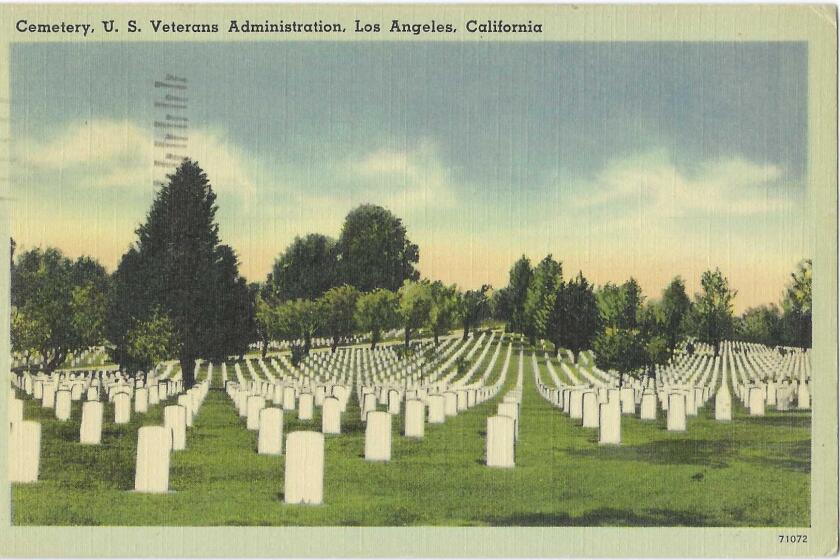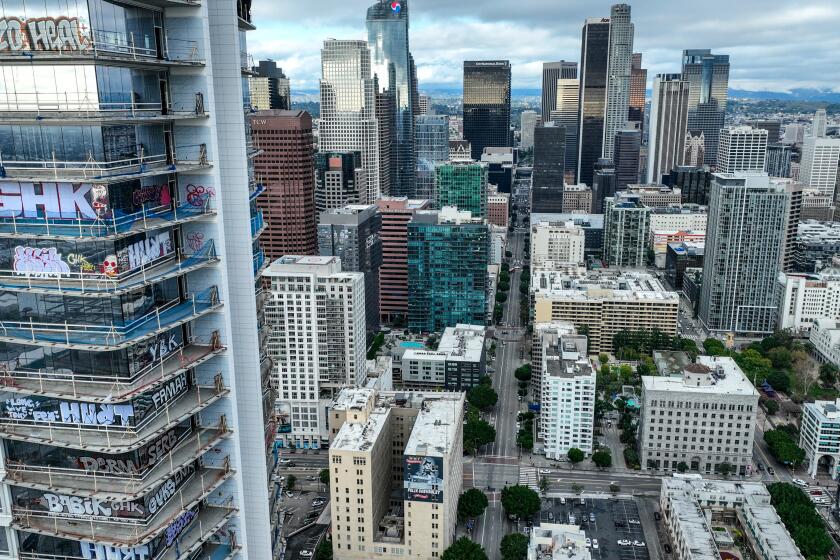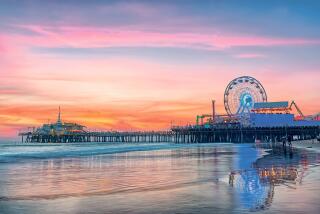Column: Confederate sentiment in Southern California ran deeper than you might know
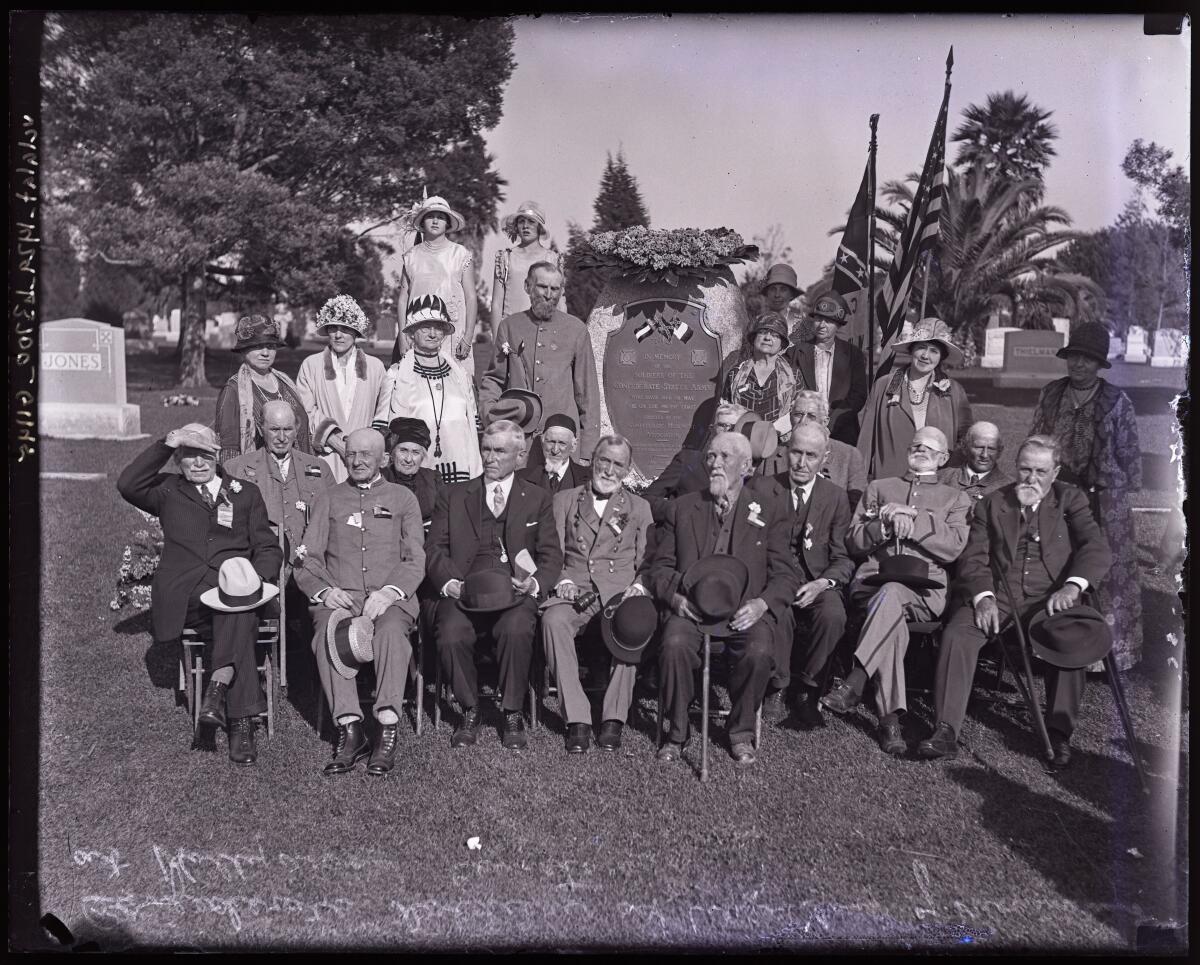
Of all the sounds now vanished from the heart of old downtown Los Angeles — the songs of the Tongva, the whistles of steam locomotives, the clanging of streetcars — there’s one you’d never have expected: the Rebel Yell.
The battle cry of the Confederacy resounded a long way from its home, but throughout the Civil War, you could hear it in secessionist hangouts like the old Bella Union Hotel.
The yell usually went along with hollering and arguing, and maybe the bibulous singing of “We’ll Hang Abe Lincoln To A Tree.” That was the Confederates’ poor rejoinder to the Yankees’ insult song about the Confederate president, “We’ll Hang Jeff Davis From a Sour Apple Tree.” (Poor, because the meter doesn’t scan, and who hangs anyone to a tree, anyway?)
Like the song, the Confederacy was a failure. But here — here, in now politically azure-blue L.A. — sympathy for the South was muscular and, as far as the U.S. government was concerned, a potential menace.
Think of Jets and Sharks decked out in buckskins or Yankee blue, ambling down our grubby streets, swapping mad-dog stares or whistling a few bars of those taunting tunes — pushing, egging, daring someone to start something.
That modest-scale surrogate Civil War was fought here, in the cow county of Los Angeles, where the ratio of cattle to people at the war’s beginning was almost seven to one: a reported 11,333 two-legged residents to some 70,000 bovine.
Get the latest from Patt Morrison
Los Angeles is a complex place. Luckily, there's someone who can provide context, history and culture.
You may occasionally receive promotional content from the Los Angeles Times.
These were fraught times, knife-edge times. And oh, do they sound familiar: treason and vigilantism afoot, radicals spoiling for a fight, an epidemic and resistance to vaccination orders, and ballot box-stuffing accusations, which in this instance turned out to be true.
I thought about this not long ago, when the L.A. County Board of Supervisors moved toward making a county historical landmark of the Altadena gravesite of Owen Brown.
Not a name that sets off the alarm bells of memory, right? Owen Brown was a son of John Brown. He was the man who, in 1859, led his sons and fellow abolitionists, Black and white, on a raid of the federal armory at Harpers Ferry in Virginia, now in West Virginia.
Brown’s goal was to arm and inspire an uprising among enslaved people. He failed and was hanged for treason. But the botched raid nonetheless put a match to the fuse of the Civil War. Owen got away, and wound up in the Altadena foothills, where he died in 1889.
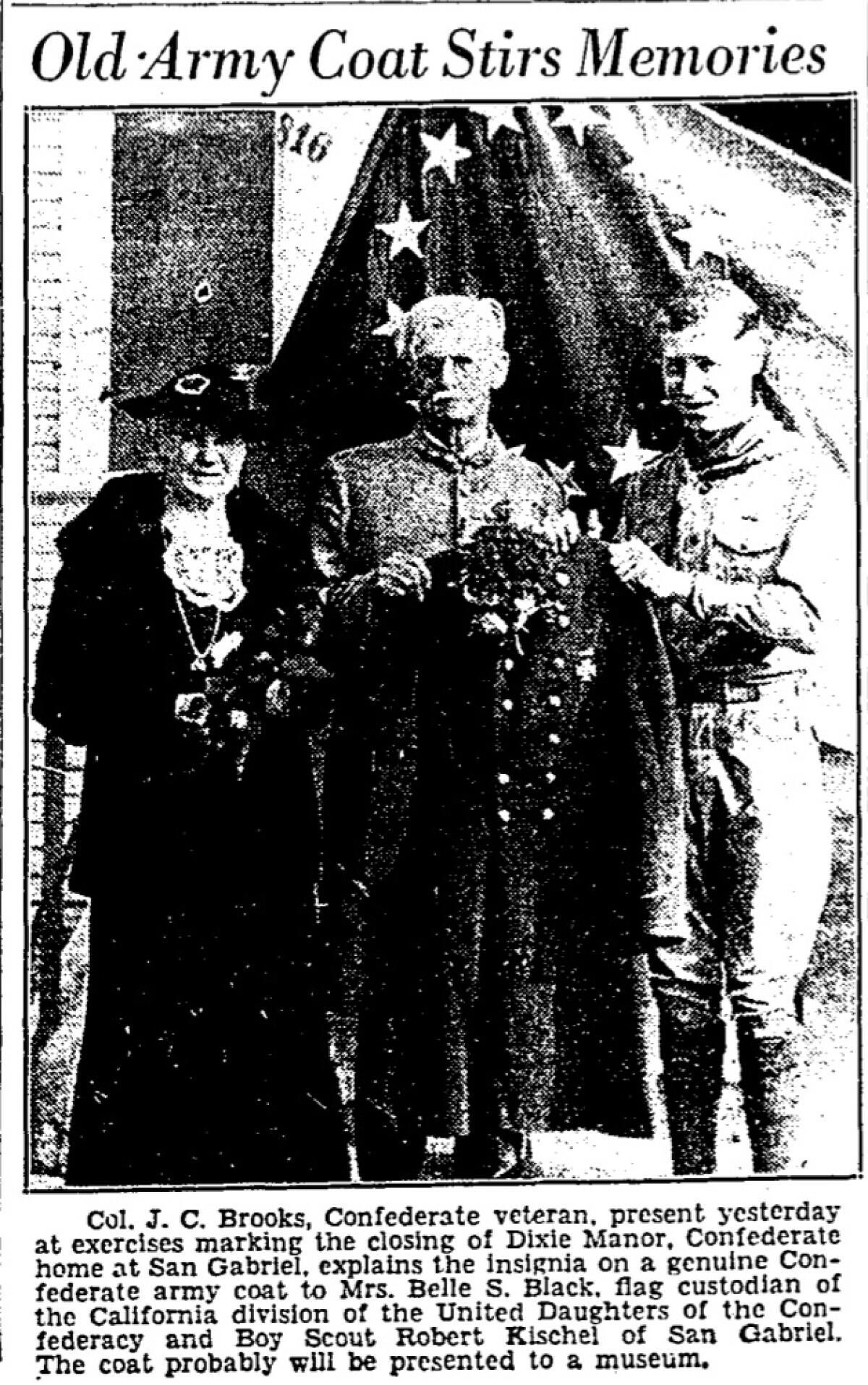
But in 1929, almost 65 years after the Civil War ended — a human lifetime — the United Daughters of the Confederacy opened Dixie Manor in San Gabriel, a home for old Confederate soldiers. Twenty-one of them went through its care before the manor closed up shop in 1936. Many of those 21 were buried in Hollywood Forever cemetery, where a 1925 monument to Confederate soldiers and families buried there was carted off in 2017, days after the “unite the right” white supremacist rally in Charlottesville, Va.
How did Southern California wind up so … Southern?
Well, the Butterfield stagecoach routes ran from Texas through Arizona and New Mexico into L.A., and people heading west brought enslaved Black men and women with them, to the gold fields and, after the gold played out, throughout the state.
California’s constitutions forbade slavery, but slave-masters and slave-catchers often ignored that. (In 1856, Biddy Mason, born in Mississippi and brought here by a slave owner, won her freedom from a judge in a Los Angeles courtroom where she was not permitted to testify.)
Just about the only non-Southern sympathizing county officials at the outset of the war were the district attorney and the county surveyor; even the sheriff and two of his underlings were pro-Confederate, and one of them, A.J. King, was briefly arrested for declaring that Confederate President Jefferson Davis was “the only constitutional government we have.”
In 1860 and 1864, in the two elections that sent him to and kept him in the White House, Abe Lincoln lost L.A. County. In 1860, he came in third.
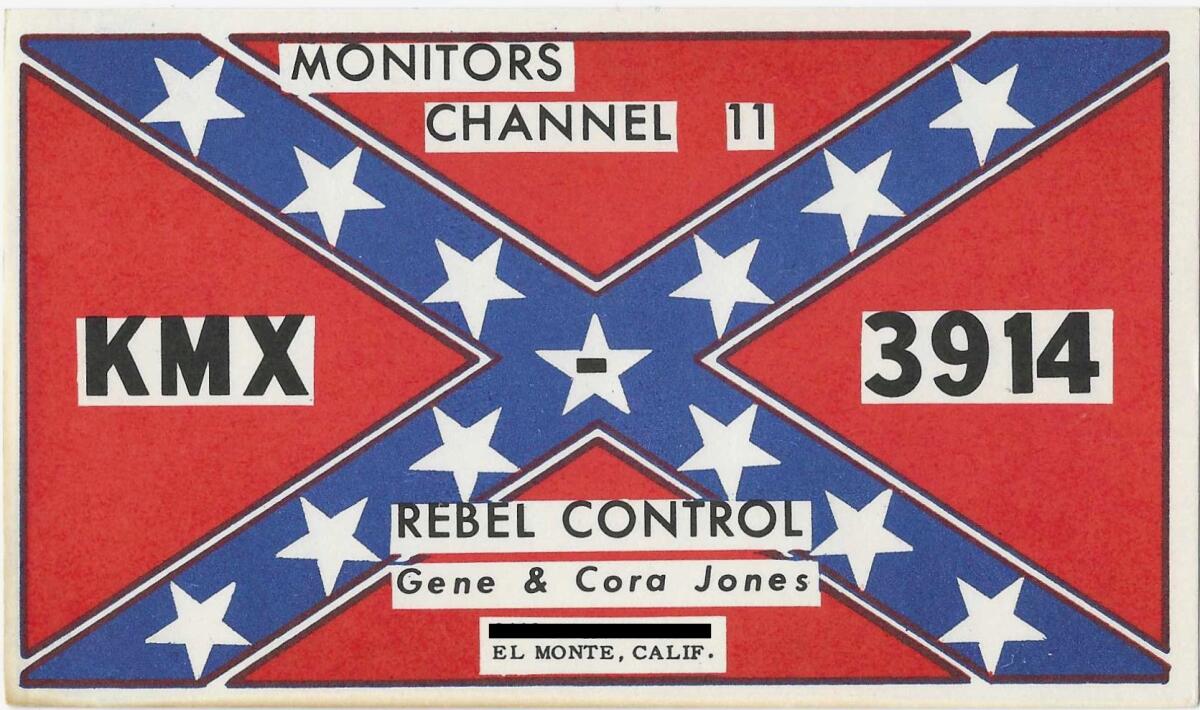
El Monte was far out of L.A., but not so far as to miss out on the action.
In the spring of 1861, about a month before the Civil War began, the “Monte Mounted Rifles” formed up, led by Undersheriff King. Most were emigres from Texas who brought their politics to El Monte.
Itching for a robust little set-to, they rode around waving the California Republic’s Bear Flag — which by then was a states’ rights symbol. El Monte’s deputy postmaster refused to deliver pro-Union newspapers to subscribers. Even after the war, Major Horace Bell, who’d left L.A. to go fight for the Union, wrote that if he had occasion to go to El Monte, he found himself attacked.
El Monte traveled a long road to shed this reputation; in the 20th century, an El Monte pastor was also the local Ku Klux Klan’s “Kludd,” its spiritual leader. And in the 1960s and ‘70s, the American Nazi Party opened up shop in town.
The actual war simply blew open these schisms.
The Bella Union Hotel, standing a few yards northeast of the present Los Angeles City Hall, was where the Butterfield stage stopped to disgorge its passengers. It was also practically a clubhouse for Southern sympathizers. Not long after the war began, pro-Confederates carried into the Bella Union saloon — as triumphantly as if it had been the man himself — a full-sized color lithograph portrait of P.G.T. Beauregard, the Confederate general who had ordered the bombardment of Ft. Sumter.
The hotel shared its grounds with the offices of the Los Angeles Star. Its owner/editor was an ardent secessionist and racist who thundered that the war was being fought for “the degradation of the white race, and the elevation of the African family among them.” Henry Hamilton was arrested for treason later in the war and spent 10 days in Alcatraz. He had to swear an oath of allegiance to the Union but returned unrepentant, to a hero’s welcome barbecue in El Monte.
A San Francisco newspaperman told his readers in the pro-Union Bay Area that secesh Angelenos filled the spring air with “Dixie.” What he actually wrote was “dogs bark it, asses and mules bray it, and bilious bipeds whistle it.”
Plans were underway for a big pro-Union demonstration in May 1861 when an anonymous threat posted outside the Bella Union warned that anyone raising the Stars and Stripes above the courthouse would be shot. The flag was raised anyway, sans bloodshed, and a 34-gun salute was fired, one volley for each state, boldly including the Confederate states.
Cemeteries -- grand and all-but-forgotten -- dot our landscape. Here are their stories -- and the stories of Angelenos who found their final rest there.
Maybe the most mythologized event of Los Angeles’ Civil War happened behind closed doors in the Army quartermaster’s brick home at 3rd and Main streets, perhaps in early to mid-June 1861.
A number of U.S. Army officers stationed in California were Southerners by birth. Some were also colleagues and friends of Winfield Scott Hancock, who as quartermaster was charged with protecting Union armaments in Los Angeles. He took this all seriously enough to arm his wife, Almira, against being taken prisoner.
At this famous “last supper” were Hancock’s friends and fellow officers — the Southerners Albert Sidney Johnston, Lewis Armistead, Richard Garnett and George Pickett, who had resigned their Union commissions. They’d be fleeing to join the Confederate army — Johnston early on June 16, just ahead of an arrest warrant.
Through the evening, as the stories go, there was some singing, some weeping, and expressions of eternal affection. Johnston was killed not quite a year later, at the Battle of Shiloh. The other four met on the battlefield at Gettysburg in 1863. The Confederates charged Hancock’s position in the disaster that became known as Pickett’s Charge. Garnett died in the field. Armistead lived long enough to tell a field surgeon, “Say to General Hancock for me that I have done him, and you all, a grievous injury, which I shall always regret.” Pickett survived but fell into a slough of despond and vengefulness. Another dinner guest, the Southerner Cameron Thom, was wounded at Gettysburg but returned to L.A. to become its 16th mayor.
Several days after this lachrymose dinner, a carnival-level event delighted Angelenos of either political persuasion. About 30 camels — survivors of a bright idea about using these “ships of the desert” in the American West — were sent down from Ft. Tejon. This exotic parade down to a corral on Main Street must have been beyond strange. They were eventually moved to the Drum Barracks in Wilmington, sold off, died, or even released. Rumors endured into the 1900s that they had escaped and were breeding in the sandy reaches of the Imperial Valley.
The Union was worried enough about secession sentiment here that federal troops’ numbers were bulked up. A wily old Union Army commander, Edwin Sumner, sized up the situation for Washington, D.C., from his Bay Area HQ: Secessionists were not the majority but “the most active and zealous party” in California, and as for L.A., “there is more danger of disaffection at this place than any other in the state.” It is “necessary,” he informed the nation’s capital, “to throw reinforcement into that section immediately.”
Before the Civil War, some Californios and residents from the American South agitated again and again to divide the state in half — Union sympathizers in the north, Southerners and slavery supporters in the south.
Paradoxically, the Civil War put a stop to that — but not forever. Now and again some look-at-me legislator tries once more to carve up California. When a three-state horizontal divvy was proposed in the 1990s, the PBS program I co-hosted held a contest to name these putative states. The winner, I believe, was “Fogland, Logland and Smogland,” but I secretly rooted for “Id, Ego and Superego.”
The South was right to believe that California was critical to the war effort. The victorious Union Gen. Ulysses S. Grant sagely remarked of the tens of millions in California gold that paid the Union Army’s bills: “I do not know what we would do in this great national emergency were it not for the gold sent from California.”
More than 200 men left L.A. County to wear the Confederate uniform, but only two local men were known to have joined the Union army. One was Bell, and the other man had to go out of town to enlist; it was too dangerous to do so in L.A.
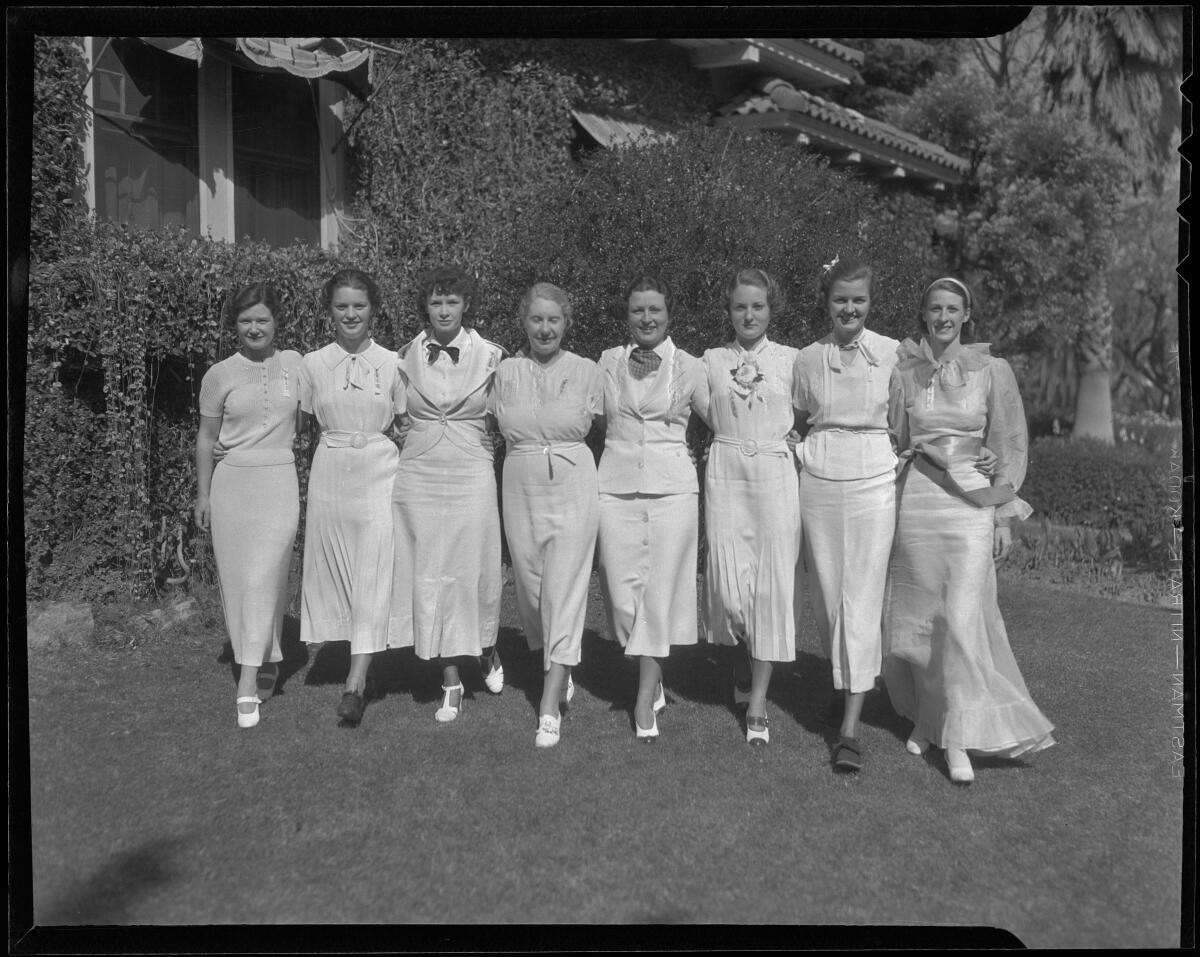
And so the war trudged on — thousands of miles away, but passionately waged in L.A.’s hearts and minds. In 1863 and 1864, official Fourth of July celebrations were canceled or scaled back to keep a lid on angry feelings.
A smallpox outbreak in 1862 and 1863 required houses with sick residents to quarantine, and hang out a yellow flag. Medical officers went neighborhood by neighborhood to find cases and locate the unvaccinated and offer — and sometimes insist on — administering the vaccination for free. Not everyone cooperated.
In the September 1862 elections, accusations of ballot box-stuffing turned out to be true. Members of the California Volunteers — a kind of home-front militia to help the Union keep the peace here — weren’t L.A. residents but cast more than 200 illegal votes in the Ballona district anyway. Near San Pedro, volunteers evidently scared known Confederate sympathizers away from the polling place.
The Ballona vote was thrown out, and according to historian John W. Robinson in his book “Los Angeles in Civil War Days,” a San Francisco Bulletin reporter here during the election wrote that “to all intents and purposes, we might as well live in the Southern Confederacy as in Southern California.”
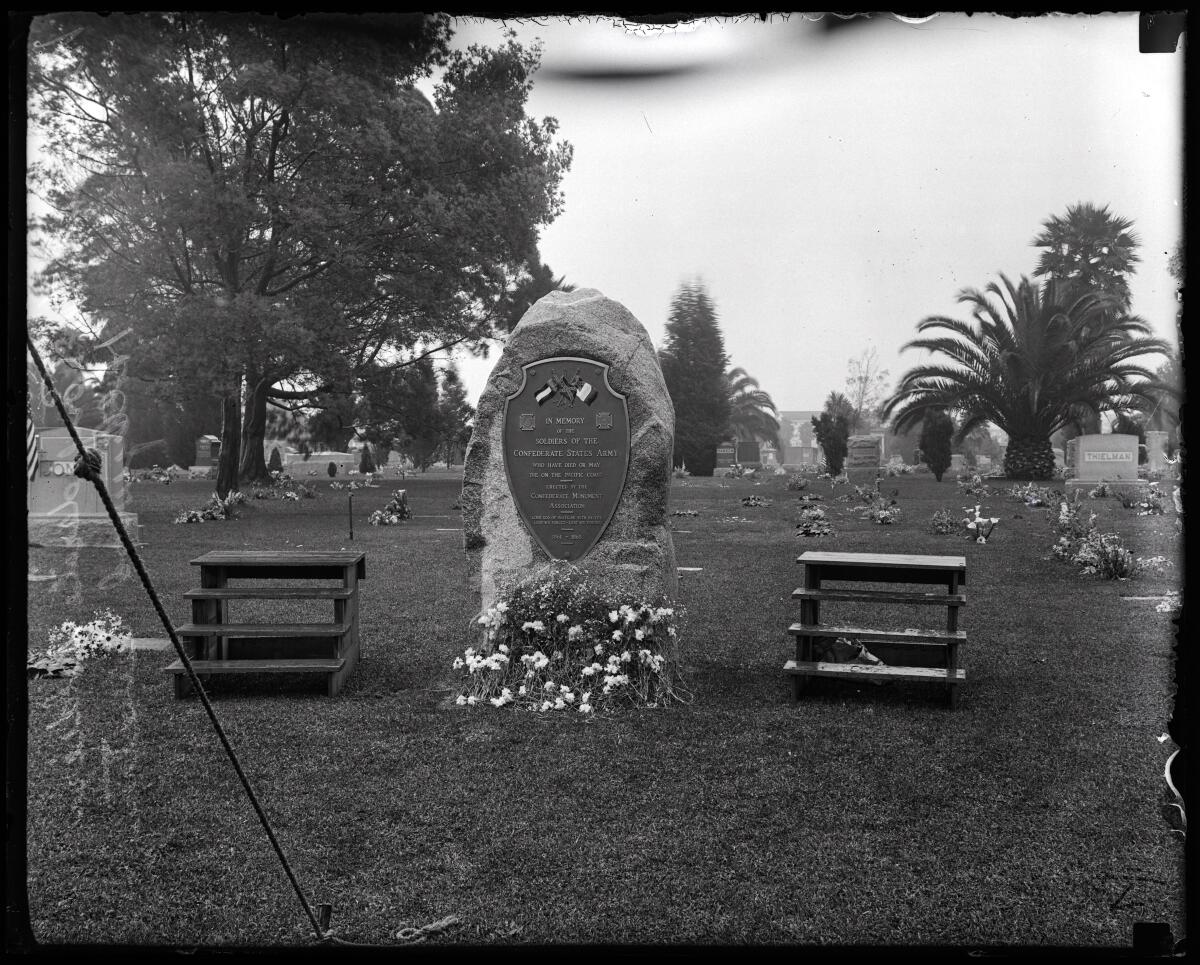
Tempers and feelings did not ebb with the South’s failing fortunes on the battlefield. On April 9, 1865 (159 years ago this week), Gen. Robert E. Lee surrendered to Grant in Lee’s home state of Virginia. The news arrived here by telegraph the next day, but the Union headquarters at the Drum Barracks in Wilmington didn’t hear it until the next day, when the governor telegraphed the surrender news. Cannons and the bells made a cacophony of celebration as pro-Union Los Angeles threw off its timidity and danced in the streets.
The joy didn’t last. Four mornings later, at 9:20 on Saturday, April 15, the telegraph office — which stood roughly where City Hall is now — got this news: “President Lincoln and Secretary Seward were assassinated in Washington last night. The president died this morning; Seward still alive but not expected to live.”
No one needed social media or phones to spread this calamity. Distraught Angelenos ran through the streets, calling out the news. Some collected at the telegraph office, crying.
Los Angeles graffiti — in the form of a tagged-up, unfinished skyscraper downtown — has recently made national news. But we’re also the mural capital of the world and constantly asking ourselves: Is this art or vandalism?
But then, here and there, from the homes of some Confederate supporters, came the sound of jubilation. At the Baer house, young Henry ran out the door singing “Dixie.” His father, Abraham, an immigrant tailor from Bavaria, dragged him back inside for a whipping. Immigrant pioneer Harris Newmark wrote that this nearly broke up the Baer family, because Mrs. Baer was a devoted secessionist.
Newmark was at home that morning with his guest, Dr. John Griffin, a brother-in-law of the Confederate Gen. Johnston, and Griffin started to do what Henry Baer had run out the door to do, cheering for Jefferson Davis.
With presence of mind, Newmark body-blocked him. “By main force, I held him back, convincing him at last of his folly.” A man rejoicing in public at Lincoln’s murder might himself have become a dead man that day.
Several secessionists celebrating the assassination were arrested, among them an odd character named Peter Biggs. Biggs was a Black man brought here enslaved in the early 1850s by his then-owner, a military officer. Biggs became free and opened a barber shop. But when war came, he sided with the South. He had been arrested in May 1863 and forced to walk hobbled by ball and chain from central L.A. to the Drum Barracks at the harbor. Along the way, he tossed his hat in the air and gave three cheers for Davis.
He was freed after signing an oath of allegiance to the Union, but here he was again, delighted at the news of Lincoln’s death, and arrested again. Four years later, Biggs was stabbed to death in a restaurant by the cook.
The following month, as Newmark pointed out in his memoirs, for the first time ever, Unionists beat secessionists in the Los Angeles city election.
That hardly ended sore feelings. Even after the Appomattox surrender, the secessionist undersheriff, King, went on insisting, “We have been and are yet secessionist.” Horace Bell found that Confederate-sympathizing friends still turned their backs on him, and one of them told him, “The idea of a Los Angeles man of your stamp fighting on the side of the Blacks!”
But other matters soon pressed in to occupy Angelenos. The drought of 1864 had already started the death spiral of the region’s cattle-grazing economy, and in time it was back to business as usual — and the seasonal disaster calendar of fire, flood, drought and quake.
Explaining L.A. With Patt Morrison
Los Angeles is a complex place. In this weekly feature, Patt Morrison is explaining how it works, its history and its culture.
More to Read
Get the latest from Patt Morrison
Los Angeles is a complex place. Luckily, there's someone who can provide context, history and culture.
You may occasionally receive promotional content from the Los Angeles Times.
